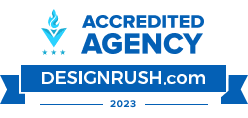Three Essential Elements to Achieve CRM Success

If your CRM performance hasn’t been living up to your expectations due to a lack of communication, training or data quality, you aren’t alone. Respected research organizations have been saying for years that more than 70% of CRM implementations fail to meet expectations. But these CRM Success failures are often caused by people and process issues rather than technology issues.
While every organization strives to make its CRM deployment as smooth and painless as possible, many get off to an unsteady start. From working with law firms and professional service firms of all sizes for more than a decade on CRM implementations we’ve learned that they must have these three key supports in place for technology deployments to be successful with any CRM or martech implementation:
- Communication
- Training
- High Data Quality
For our visual learners out there, let’s use a three-legged stool to put things into perspective. A stool represents a solid platform that enables you to reach higher, each leg being equally important to the stability of the stool. If one of the legs is too short, unstable or missing, the stool can easily topple over.
The same is true for CRM. Deficiencies in communication, training or data quality can independently “topple” the success of the entire CRM deployment.
The First Leg: Communication
The first step to CRM success is to develop a complete CRM communications strategy. It is a good idea to draft the strategy when the system is first being planned. Continue developing this draft through deployment and even after it is launched to encourage adoption and support long-term success. Carefully consider the messages, the messengers, the recipients and the timing.
For example, early in the process, send announcements from firm leadership explaining why CRM is important as a firmwide initiative – emphasizing there is support from the beginning and from the top. Doing this can send a strong message and help set expectations for user adoption.
During deployment of the CRM, send out regular internal updates on its progress, training notifications, announcements about early successes – and most importantly – the benefits users can gain when the new system is in place.
After the CRM is launched, we recommend sending regular communications about system enhancements, success stories, new reports or dashboards, and training options whether live, via videos or through a helpdesk.
The Second Leg: Training
Effective training occurs when the training team fully understands user needs and how they will actually use the CRM. Some questions you can ask to understand end-users needs are:
- How should users be segmented?
- Should training be segmented by type of user, skills required or capacity for learning?
These may seem like common sense, but the execution can be difficult because firms tend to gravitate toward “group training” as this can be more cost-efficient for the firm and training staff. But this is often the least effective method of training for end users because everyone will have different needs and ultimately end up using the system differently.
Law firm partners are an excellent example of a user group that needs customized and individualized training. As they are naturally skeptical, partners need evidence showing how the CRM will support their needs. Without sufficient evidence, they may never log into the system again.
Those that are skeptical will likely benefit the most from one-on-one training, either in their office or by zoom meetings using data they recognize as their own to grab their attention and demonstrate how the CRM can be personally helpful to them. Group training can lack the ability to effectively communicate CRM benefits and turn users away from adoption.
The most important thing training should focus on is how the end users can “consume” information and gain value from it. Avoid focusing on the “why” and “how” aspects of contributing. We find that most of the time, lawyers need to see and feel the benefits of consuming the information before they ever consider contributing to the CRM. Turning the “consumer to contributor” can be a difficult process and may never happen, but if you can convert some into consumers, consider that a win.
The Third Leg: High Data Quality
The most common reason CRM failure rates are so high is poor data quality. We frequently tell firms that once the data goes bad the CRM system is not failing it has already failed. This may sound harsh, but it’s a fact. As we mentioned, if the data in the CRM is bad, lawyers will take it as a reflection of the integrity of the whole system and not use it.
Good data is at the heart of every CRM. When data goes bad, the system becomes unstable and if not addressed properly, the system can topple. To fix this, oftentimes marketing teams will look for short-term fixes, like cleaning up next month’s event list or the holiday list.
For long-term success, firms should have the right resources and processes in place in order to maintain high data quality, and the system’s ability to support the firm not only with clean lists but quality reporting that gives attorneys information they need.
CRM success is possible if you can commit regular attention and resources to communication, training and data quality. If you think your CRM is failing or has been faltering recently, you may find some deficiencies in one or more of these areas.
For more than a decade, the team at CLIENTSFirst Consulting has been helping professional services firms and other organizations successfully select and implement CRM and eMarketing systems and improve Data quality to maximize value, adoption and return on investment. If you need help achieving CRM Success, please contact us at 404-249-9914 or Info@ClientsFirstConsulting.com.







